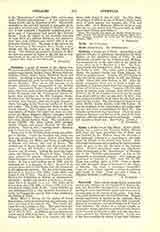

Cydonia, a titular see of Crete. According to old legends Cydonia (or Kydonia) was founded by King Kydon, on the northwest shore of Crete. It was afterwards occupied by the Achwans and Molians, but remained one of the chief cities of the island till it was taken by Q. C. Metellus (A.D. 69). The Venetians rebuilt and fortified it in 1252; it was taken by the Turks in 1645. The Arabs called it Rabdh el-Djebn, the modern Greeks and Turks Khania, the Western peoples Canea. Lequien (II, 272) knows of only two Greek bishops: Sebon, in 458, and Nicetas, in 692. Gams (404) adds Meliton, in 787. After the
Frank occupation there was in Crete a Latin see, Agriensis, or Agiensis, which must have been the same as that of Cydonia, or Canea. Lequien (III, 923-928) knows of sixteen Latin bishops, from 1310 to 1645. Eubel (I, 76; II, 93) numbers seventeen for the period from about 1300 to 1481 (see also ibid., II, 312). The last occupant retired to Italy when the city had been taken by the Turks. The population of Canea is now about 20,000, mostly Greeks, with 200 Latins. It was the residence of the Latin Bishop of Candia, after the see had been reestablished by Pius IX. The Catholic parish is held by Capuchins. There are some Christian Brothers and Sisters of St. Joseph de l’Apparition, with two schools and an orphanage. Canea still remains a Greek see.
S. PETRIDES

